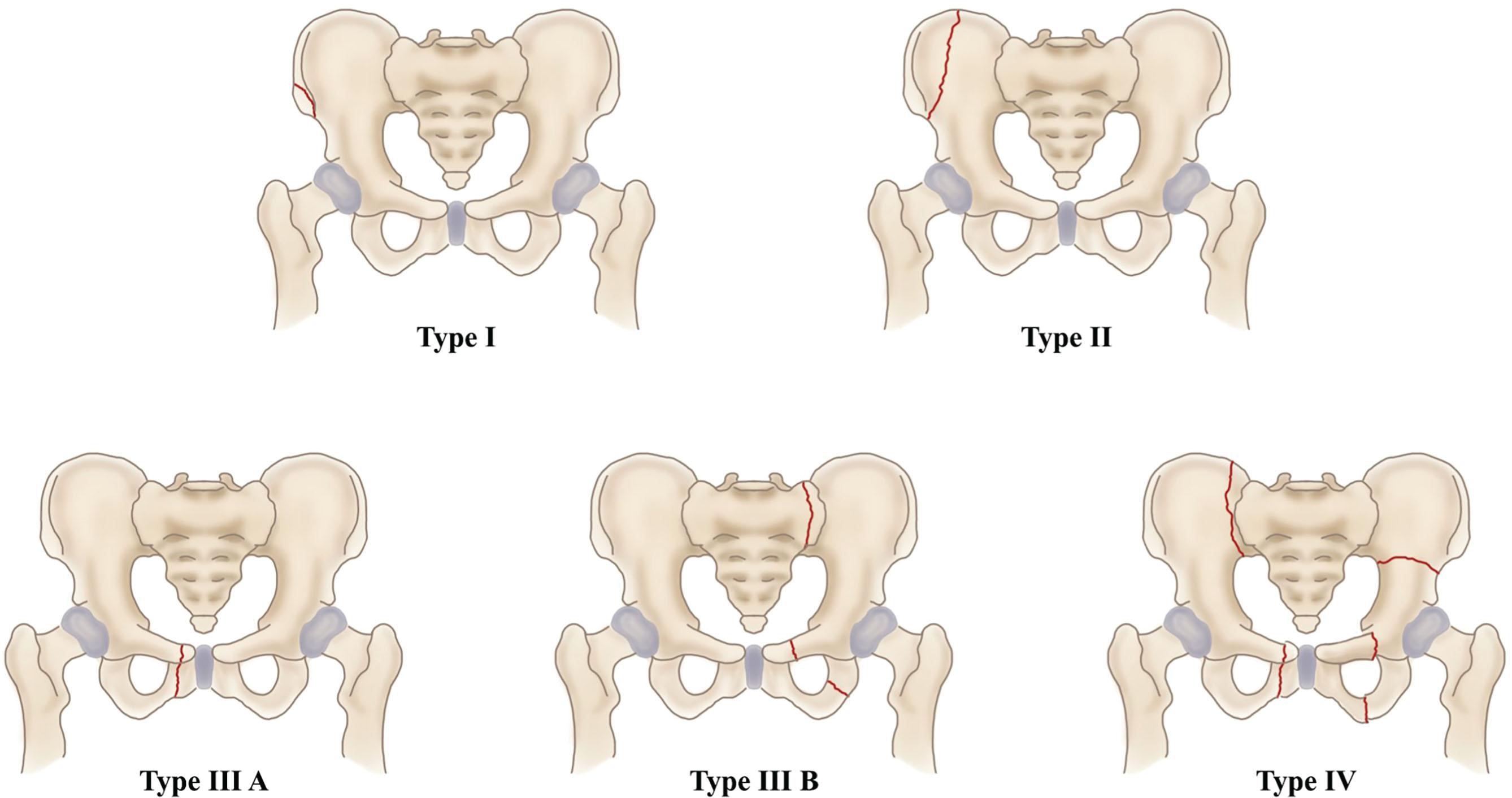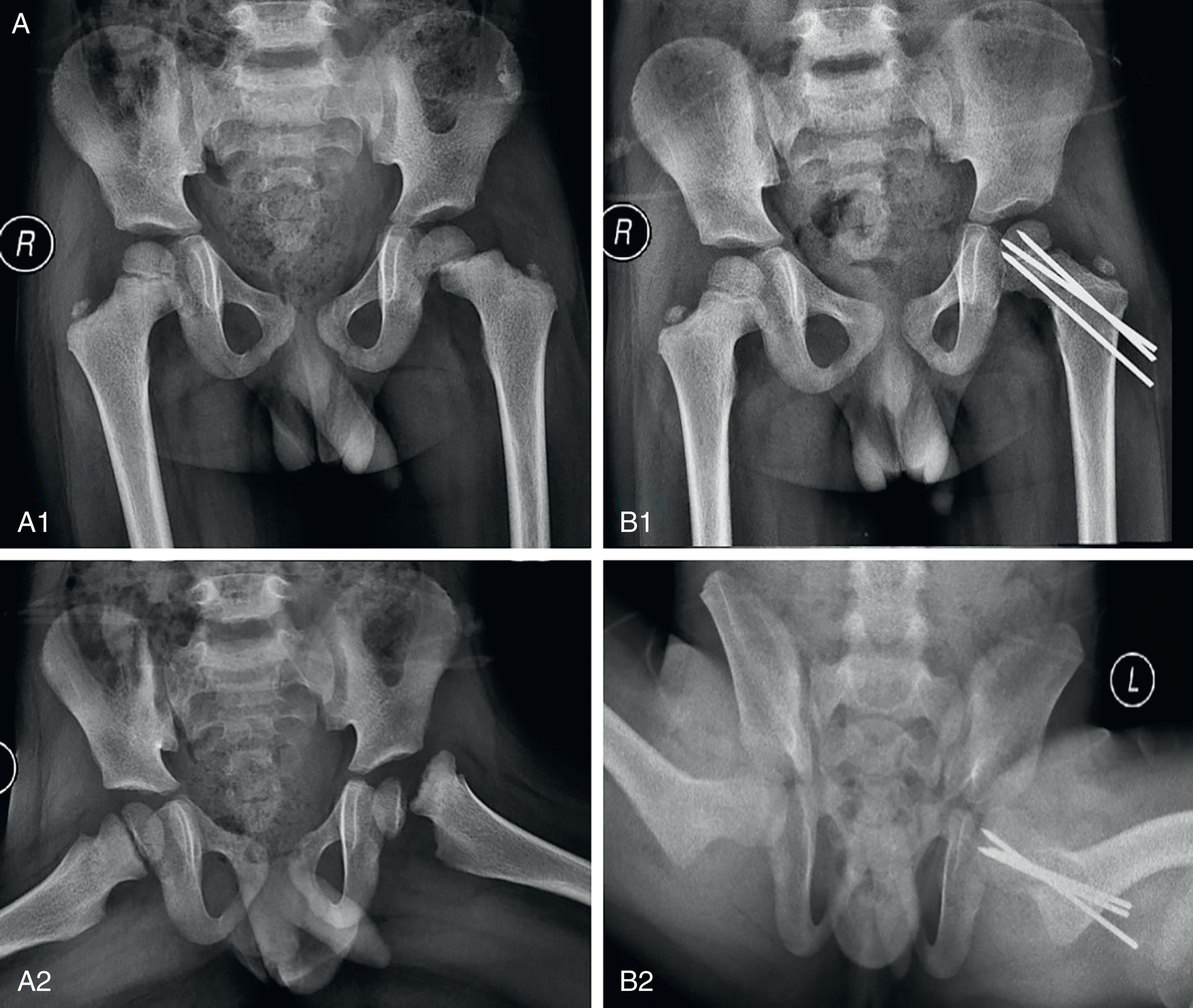Physical Address
304 North Cardinal St.
Dorchester Center, MA 02124
Pediatric pelvic bone fractures are quite uncommon, except for avulsion fractures. Pelvic fractures in these age groups are mainly seen after high-energy traumatic injuries like motor vehicle accidents. A study by Banerjee et al. from a level 1 trauma center in the United Kingdom mentioned that pelvic injuries are most commonly associated with extremity injuries followed by head injuries. A systematic review by Sridharan et al. confirmed that motor vehicle accidents are the most common mode of injury, with extremity injury and head injury being most common associated injuries. These are serious injuries, with almost one-third of the patients requiring blood transfusion. The mortality rate in pediatric pelvic fracture patients is reported to be around 8.6%. High injury severity score (ISS) and associated severe head injury are related to increased mortality. In a study by Chia et al., out of 120 patients included in the study, 94 (78%) had associated injuries, out of which 32 (27%) required surgery. Even with these rates, mortality in children is much less compared to adults, as they have a more effective hemostatic response compared to the sclerotic vessels of adults.
Most pelvic injuries in children are treated nonsurgically, with protected weightbearing and gradual return to activity. In a study by Chia et al. 113 out of 120 (94%) pediatric patients with pelvic injury were treated nonoperatively. The flexibility of the bone and thick, strong periosteum is responsible for the resilience of the pediatric pelvic ring. Also, the sacroiliac (SI) and symphyseal joints are more elastic and the symphysis pubis is thicker in children, accounting for rare failure of the pelvic ring.
Pediatric pelvic fractures can be classified as per the Torode and Zeig classification or the Tile and Pennal classification. Torode and Zeig classification divides fractures into stable and unstable but does not differentiate between fracture type and degree of instability. The Tile and Pennal system combines the mechanism of injury and pelvic ring stability and makes a distinction between stable (type A), rotationally unstable (type B), and vertically unstable (type C) pelvic fractures, but it is easier to classify pediatric pelvic injuries with the modified Torode and Zeig classification (MTZ) ( Fig. 10.1 ). MTZ type I fractures are avulsion fractures. These avulsion fractures are seen at sites of muscle attachment on the apophysis like the ischial tuberosity, anterior superior and inferior iliac spine, and iliac apophysis typically seen in sports injuries in adolescents. These are low-energy injuries that are managed on an outpatient basis with partial weightbearing and restricted activity levels. MTZ type II fractures do not involve the pelvic ring. These are injuries to the apophyseal or bony ilium. MTZ type III fractures are fractures affecting the pelvic ring without any clinical instability. MTZ type III is divided into IIIA and IIIB, with involvement of the pelvic ring and other associated injuries to be far more extreme and severe in IIIB compared to IIIA, but type III injuries are stable injuries. MTZ type IV fractures are unstable injuries with disruption of the anterior and posterior pelvic ring generally requiring fixation. In a systematic review by Sridharan et al. most of the MTZ type IV injury patients (196 out of 214) were managed by surgical fixation. After primary resuscitation, pelvic binder, external fixator, or osteosynthesis are available options. If hemodynamic instability persists even after applying an external fixator, packing or embolization is the next option. Indications for open reduction internal fixation include but are not limited to acetabular fractures with greater than 2 mm of fracture displacement and for any intra-articular or triradiate cartilage fracture displacement greater than 2 mm. A recent systematic review by Sridharan et al. of 15 studies that reported on conservative versus surgical management of pediatric pelvic fractures mentioned that only 8.8% of all fractures were operated on. According to this review, the most common method of pediatric pelvic fractures was open reduction internal fixation with or without iliosacral screw fixation (83.6% of cases), followed by percutaneous screw fixation alone (7.2% of cases).

The cancellous surface of fractures and venous channels are the primary sources of bleeding in pelvic fractures. Placing an external fixator as the first step helps to stabilize the pelvis and reduce the volume of the pelvis, which in turn helps to control the volume of bleeding. Another indication for external fixator application is pelvic ring displacement greater than 2 cm.
Pediatric pelvic fracture mismanagement is associated with malunion of the pelvic ring in pelvic fractures and long-term morbidity and premature closure of triradiate cartilage in immature pelvic acetabular fractures. Premature closure of triradiate cartilage is responsible for acetabular dysplasia, hip incongruity, and sometimes hip subluxation. Malunion of the pelvis leads to distortion of the birth canal. Thus, it is recommended to perform pelvimetry in pregnant females who have a history of pelvic fractures. Other complications include limb length discrepancy, back pain, limp, lumbar scoliosis, or pelvic floor incompetency. Myositis ossificans and nerve injuries like femoral nerve, sciatic nerve, and lumbosacral plexus injuries are known but rare complications of pelvic fractures. Mosheiff et al. identified wound and septic complications in 11 out of 15 complex open pelvic crush injury patients, two cases of recurrent bowel obstruction, and one case of vascular graft failure. A study by Meyer-Junghänel et al. reported a complication rate of 38%.
A study from a level 1 pediatric trauma center in Chicago mentioned that, even though pelvic fractures are uncommon fractures in the emergency room, they should be prioritized, as more than half of these will have concomitant injuries requiring operative intervention. A study from Egypt evaluated predictive mortality risk factors in both adult and pediatric patients with pelvic fractures and found that the first 24 hours are the most critical time period to determine survivorship. Associated injuries including head injury, high ISS, and positive FAST (Focused Assessment with Sonography in Trauma) examination are predictors of increased mortality risk in these patients.
A study by Upperman et al. mentions that short-term function seems to be significantly impaired in both stable and unstable pelvic fractures, and therefore rigorous rehabilitation is required to achieve early and optimal functional outcomes. Banerjee et al. reported that the long-term outcome was good in a pediatric pelvic fracture group with conservative management, but that pelvic fractures per se are an indicator of other serious injuries carrying a high mortality rate. A long-term follow-up study on 126 patients by Richter having a mean follow-up of 4 years found that 11 had pain, 16 had difficulty in sports, and 14 had clinical pelvic asymmetry. Bony deformities were seen in 23% of the cases. A study by Schwarz et al. reported a direct correlation between malunion and poor results in a long-term study on pediatric pelvic fracture management. The results correlated well with pelvic asymmetry leading to lumbar scoliosis, low back ache, and limb length discrepancy. A study on complex pelvic trauma by Meyer-Junghänel et al. reported varied complications ranging from pain and degenerative changes in the SI joint and ankylosed SI joint to urinary incontinence. The study reported such complications to be a result of 8 out of 16 sacral fractures being missed in these patients. In a study of 55 unstable pediatric pelvic fractures treated conservatively by Subasi et al., physically morbid complications like urethral strictures, urinary incontinence, and erectile dysfunction were seen in many patients. In fact, 56% of the patients in this series had long-term psychiatric problems. In a study by Smith on 20 unstable pelvic fractures, 17 showed pelvic asymmetry that did not remodel after an average follow-up of 6.5 years. There was a 48% versus 18% reduction in asymmetry after operative versus nonoperative treatment. In terms of fixation, anterior and posterior stabilization showed better results compared to external fixation alone.
In conclusion, the long-term results of pediatric pelvic fractures indicate that unstable fracture types are associated with more complications and poorer long-term outcomes. With advancing technology and improved management of pediatric polytrauma cases, we hope there will be reduction in mortality and long-term complications associated with pediatric pelvic fractures.
Pediatric hip fractures constitute less than 1% of all pediatric fractures and are typically seen after high-energy trauma. They are commonly associated with head, chest, and abdominal injuries in about 30% of patients. Children under 1 year of age are generally treated with a Pavlik harness or hip spica cast. Children aged more than 1 year with displacement have to be managed with closed reduction and internal fixation with/without a hip spica cast.
The authors’ choice of fixation and immobilization is shown in Table 10.1 as per the Delbet classification of pediatric femoral neck fractures ( Fig. 10.2A–D ).
| Delbet Fracture Type | Type of Reduction | Type of Fixation | Implant of Choice | Additional Immobilization |
|---|---|---|---|---|
| I | Anatomical | Screw construct | K-wire/screw construct depending on the age of the child | Hip spica mobilization |
| II | Anatomical | Screw construct | K-wire/screw construct depending on the age of the child | Hip spica mobilization |
| III | Anatomical | Screw construct | K-wire/screw construct depending on the age of the child | Hip spica mobilization |
| IV | Anatomical | Side plate and screw construct | Dynamic hip screw | Generally not required if surgeon is confident about the stability of the fracture |

We would like to discuss the complications of post-traumatic femoral neck fractures. Complications in pediatric femoral neck fractures can be divided into preoperative, intraoperative, early postoperative, and long-term complications. Complications of pathological femoral neck fractures are beyond the scope of this chapter.
A recently published systematic review and meta-analysis stated that there is no direct evidence suggesting any association between time to surgery and risk of avascular necrosis (AVN) of the femoral head. However, displaced fractures and Delbet type I/II fractures should be treated as early as possible.
Become a Clinical Tree membership for Full access and enjoy Unlimited articles
If you are a member. Log in here